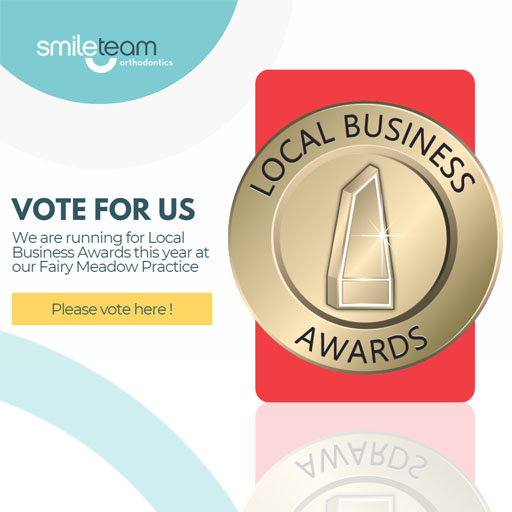
Gaps between teeth—also known as diastema—are common in both children and adults. While some view them as a unique feature, others choose to have them corrected for aesthetic or functional reasons. Whether it’s the gap between your front teeth or spacing in other areas, closing these gaps can improve not only your smile but also your speech, bite function, and gum health.
In this guide, we explore the causes of tooth gaps, treatment options tailored to various needs, and how to maintain results in the long term—all backed by orthodontic expertise.
What Is Diastema (Tooth Gap)?
A diastema is the space or gap between two teeth, most commonly seen between the upper front teeth. While it’s not a medical condition in itself, it can sometimes signal developmental, orthodontic, or periodontal concerns.
Key Facts:
- Diastema is often first noticed in childhood, especially during the transition from baby teeth to permanent teeth.
- In adults, persistent gaps may indicate issues with bite alignment, tooth size discrepancies, or habits such as tongue thrusting.
- Gaps can range from minor cosmetic concerns to functional problems affecting chewing and speech.
If you’re unsure whether your tooth gap is purely cosmetic or clinically significant, remember that a dental consultation is the best starting point for determining its significance. Your dental professional will guide you through the process, ensuring you make the best decision for your oral health.
What Causes Gaps Between Teeth?
Understanding the underlying factors that can cause spacing between teeth is crucial. It not only helps in determining the most appropriate treatment but also in preventing the issue from worsening.
- Genetics: Diastema can be inherited, running in families due to jaw or tooth size discrepancies.
- Missing or Undersized Teeth: Especially the lateral incisors, create space between the front teeth.
- Oversized Labial Frenum: The tissue that connects the upper lip to the gums can prevent front teeth from coming together.
- Childhood Habits: The prolonged use of dummies, bottle-feeding, or thumb-sucking can impact the timing of tooth eruption.
- Gum Disease: Advanced periodontal disease can cause teeth to loosen and shift out of position.
- Jaw Misalignment: A poor bite (malocclusion) can lead to spacing or improper contact between teeth.
If left unaddressed, some of these causes may worsen with time. That’s why a tailored treatment plan is essential.
6 Effective Ways to Close a Tooth Gap
There is no one-size-fits-all solution for filling tooth gaps. The best option depends on the cause, severity, location of the gap, and your aesthetic goals. Here are the most widely used and evidence-backed treatments:
1. Braces (Fixed Orthodontics)

Braces are one of the most effective solutions for closing moderate to large gaps. They work by applying consistent pressure to gradually reposition teeth.
- How it works: Brackets are bonded to each tooth and connected by an archwire. Regular adjustments tighten the wire, moving teeth into the desired position.
- Treatment time: 12–36 months, depending on complexity.
- Best for: Adolescents and adults with multiple gaps or misaligned teeth.
Pros: Braces offer predictable results, making them suitable for complex spacing and bite issues. While they may require visible hardware and regular adjustments, their effectiveness is well-established, providing you with the confidence that your treatment will be successful.
Cons: Visible hardware, regular adjustments are needed, and the duration is longer.
Orthodontists often combine braces with retainers to maintain long-term results after treatment ends.
2. Clear Aligners (e.g., Invisalign®)

Clear aligners offer a discreet alternative to traditional braces, particularly for adults who are concerned about their appearance.
- How it works: A series of removable trays gradually moves teeth. Each set is worn for ~2 weeks, 20–22 hours per day.
- Treatment time: 6–18 months for most mild to moderate gaps.
- Best for: Adults and teens with minor to moderate spacing and good oral hygiene habits.
Pros: Nearly invisible, removable for eating and brushing, more comfortable than metal braces.
Cons: Not suitable for large gaps or complex orthodontic needs, requires high compliance.
Dentists may perform minor tooth shaping (IPR) alongside aligner therapy to improve spacing precision.
3. Dental Bonding (Composite Gap Filling)
Dental bonding is a fast, cost-effective cosmetic solution that uses tooth-coloured resin to fill small gaps.
- How it works: After lightly etching the tooth surface, composite resin is shaped to fill the gap and then cured with a light.
- Treatment time: Typically completed in one visit.
- Best for: Small front tooth gaps with healthy surrounding teeth.
Pros: Quick and non-invasive, minimal enamel removal, and budget-friendly.
Cons: May stain over time, less durable than porcelain options, and require touch-ups every 5–10 years.
Bonding is often recommended for patients who want instant results before a special event or milestone.
4. Dental Veneers
Veneers are thin, custom-made shells placed over the front of the teeth. They offer both aesthetic enhancement and gap closure.
- How it works: A small amount of enamel is removed before bonding the veneer to the tooth surface.
- Types: Porcelain (more durable and stain-resistant) or composite resin (less costly, faster to apply).
- Best for: Patients seeking a total smile makeover or cosmetic improvement beyond just spacing.
Pros: Natural-looking, stain-resistant, long-lasting (up to 15 years).
Cons: Irreversible, more expensive, and enamel removal is required.
Prepless veneers are available in some cases, offering a less invasive option.
5. Dental Crowns
While crowns are more commonly used for restoring damaged teeth, they can also be part of a spacing solution in select cases.
- How it works: A crown covers the entire tooth, improving shape and alignment.
- Treatment time: Usually requires two appointments.
- Best for: Gaps accompanied by damaged or misshapen teeth.
Pros: Durable, reinforces weak teeth, improves aesthetics and function.
Cons: Invasive, more expensive, not usually the first choice for healthy teeth.
6. Frenectomy (for Large Labial Frenum)
When a thick or tight frenum is the cause of a midline gap, a minor surgical procedure called a frenectomy may be needed.
- How it works: The connective tissue (frenum) between the upper lip and gums is snipped and sutured.
- Best suited for: Children and adolescents with persistent front tooth gaps resulting from the frenum.
Pros: Quick, often performed with local anaesthesia, prevents recurring gaps after braces.
Cons: Surgical recovery is needed, and follow-up orthodontic treatment is often required.
The Australian Society of Orthodontists recommends early intervention if the frenum interferes with the natural eruption of teeth.
How to Choose the Right Teeth Gap Treatment
The best treatment for closing your tooth gap depends on several personal and clinical factors. Here’s how to assess what’s right for you:
1. Severity and Size of the Gap
- Minor gaps (<2mm): Often suitable for bonding or veneers.
- Moderate to large gaps: Braces or clear aligners are typically more effective.
2. Location of the Gap
- Front teeth (aesthetic concern): Cosmetic solutions, such as veneers or bonding, may be ideal for addressing this concern.
- Multiple or posterior gaps: Orthodontic intervention is usually needed for proper alignment and bite correction.
3. Age and Jaw Development
- Children: Some gaps may close naturally as adult teeth erupt. Orthodontic monitoring is recommended around age 7.
- Teens and adults: Treatment focuses on stable, long-term correction—braces or aligners are common choices.
4. Overall Oral Health
- Gum disease or tooth decay must be treated before cosmetic or orthodontic procedures.
- In cases of structural damage, crowns may be a suitable option.
5. Budget and Treatment Duration
| Treatment Option | Typical Cost Range (AUD) | Average Time Required |
|---|---|---|
| Dental Bonding | $250–$600 per tooth | 1 visit |
| Veneers | $1,000–$2,500 per tooth | 2–3 visits |
| Braces | $5,000–$9,000 | 18–36 months |
| Aligners | $6,000–$8,500 | 6–18 months |
| Crowns | $1,500–$2,000 per tooth | 2–3 visits |
| Frenectomy | $300–$800 | 1 visit + follow-up |
Note: Prices vary by clinic, complexity, and location. Speak to your dentist for a personalised estimate.
Aftercare: Maintaining Your Smile After Teeth Gap Closure

Once your tooth gap is corrected, maintaining the results is key. Different treatments have unique care needs, but these universal tips apply:
For All Patients
- Brush twice daily with a fluoride toothpaste.
- Floss once a day, especially around bonded or veneered teeth.
- Limit hard or sticky foods if you’ve had bonding or veneers applied.
- Avoid smoking and excessive coffee/red wine to prevent staining.
- Visit your dentist every 6 months for professional cleaning and check-ups.
Specific Aftercare Tips
- Braces: Use interdental brushes and attend regular adjustments. Wear your retainers post-treatment to prevent relapse.
- Aligners: Clean trays daily with mild soap and lukewarm water. Always store them in a case when not in use.
- Bonding/Veneers: Avoid biting directly into hard foods with front teeth. Use a nightguard if you grind your teeth.
- Crowns: Avoid chewing ice or hard sweets. Maintain gum health to support the longevity of your crown.
- Post-Frenectomy: Follow your clinician’s recovery plan. Mild swelling is normal for 1–2 days.
FAQs: Common Questions About Tooth Gap Treatments
Is gap filling permanent?
- Orthodontic results can be permanent with proper use of retainers.
- Bonding and veneers can last 5–15 years, depending on the level of care and maintenance.
Does filling a gap hurt?
- Most procedures are minimally invasive and pain-free. Braces and aligners may initially cause mild pressure or discomfort.
Can children outgrow gaps?
- Yes, especially if gaps are related to baby teeth. However, persistent gaps after age 12–13 should be assessed by an orthodontist.
Will insurance cover the treatment?
- Orthodontic treatment is sometimes covered, particularly for children. Cosmetic treatments like veneers or bonding are usually out-of-pocket.
Are there risks or side effects?
- As with all dental procedures, there may be risks, such as tooth sensitivity, gum irritation, or relapse, if aftercare is not followed. Your dental provider will explain any individual concerns during your consultation.
Why Consulting a Dental Professional Matters
No two smiles are the same, and neither are tooth gap treatments. A qualified orthodontist or dentist will:
- Conduct a clinical and radiographic assessment.
- Identify the underlying cause of the gap.
- Discuss your goals, timeline, and budget.
- Recommend the most appropriate treatment plan.
At Smile Team, we combine cutting-edge orthodontic expertise with patient-centred care to deliver tailored solutions for every smile. Our consultations include 3D scans, bite analysis, and precise planning—ensuring your treatment meets both your functional and cosmetic needs.
Conclusion: Embrace Your Smile — With or Without the Gap
Tooth gaps are natural, but if you’re seeking correction, rest assured, there are multiple safe and effective options available—from traditional braces to cosmetic bonding. Choosing the right approach depends on your goals, oral health, and the level of involvement you desire in the process.
Whether you’re motivated by aesthetics, speech improvement, or bite function, Smile Team’s experienced professionals are here to guide you from consultation to results.
